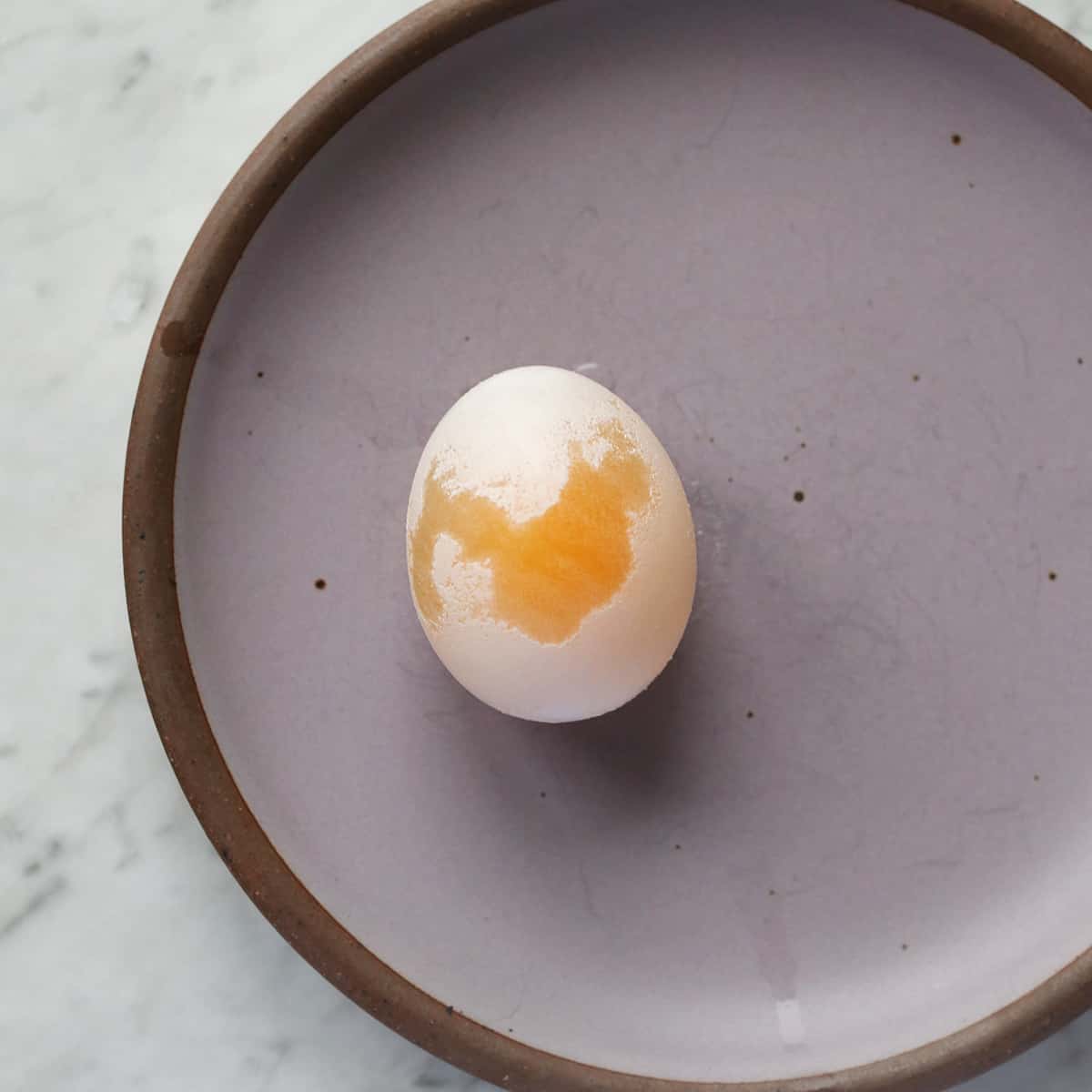This bouncy egg experiment (sometimes called “egg in vinegar”) is exactly what it sounds like. This science experiment for kids allows you to create a bouncy, squishy egg by partially dissolving the shell in acid (vinegar) for a few days.
This kids science experiment can be done by many different ages, as all the ingredients are safe to handle and nothing erupts or explodes.
The bouncy egg experiment will take a few days (at least two) to complete, so you must have some patience.
Related: Milk Painting Experiment, Skittles Experiment and find more experiments you can do at home in our science archive.

Would you like to save this?
Supplies
- Egg(s)
- Vinegar
- Glass or small bowl
You may also want to have a notebook and pencil handy so you can make observations as you go.

How to Make a Bouncy Egg
Gently place the egg in a glass or a small bowl. Fill with vinegar so the egg is fully submerged. Leave the egg in the vinegar for 2-3 days.
Then, gently remove the egg from the glass (draining the vinegar). Gently rinse off the egg with water, which may peel back a very soft shell.
The egg will now be bouncy— you can also squish the egg in your hand like Jello. However, keep in mind that if you bounce the egg with much force or squeeze hard, you will burst the soft exterior and there is still a raw egg inside.

What You Learn From This Experiment
- Encourage kids to observe and take notes each day of the experiment. Part of the scientific process is to observe and record your observations and results.
- Chemical reactions – This experiment is an example of an observable chemical reaction as the acid (vinegar) dissolves the calcium carbonate (egg shell).
- Osmosis – After the acid (vinegar) dissolves the calcium carbonate (egg shell), it crosses through the membrane of the egg through osmosis. The vinegar toughens up the membrane which is what causes the egg to be bouncy.

More Ideas to Try
- Try this experiment with different household acids like: apple cider vinegar, milk, lemon juice, or orange juice. See how the results vary.
- Try using a raw egg vs. a hard boiled egg.
- Try adding food dye to the vinegar at the beginning of the experiment.

Get creative ideas for recipes, crafts, decor, and more in your inbox!
 Get the How-To
Get the How-To
Supplies
- 1 egg
- 1-2 cups vinegar
Instructions
- Gently place the egg in a glass or a small bowl.
- Fill with vinegar so the egg is fully submerged.
- Leave the egg in the vinegar for 2-3 days.
- Then, gently remove the egg from the glass (draining the vinegar).
- Gently rinse off the egg with water, which may peel back its very soft shell.
- The egg will now be bouncy; you can also squish the egg in your hand like Jello.
Equipment
Notes
- Keep in mind that if you bounce the egg with much force or squeeze hard, you will burst the soft exterior and there is still a raw egg inside.



